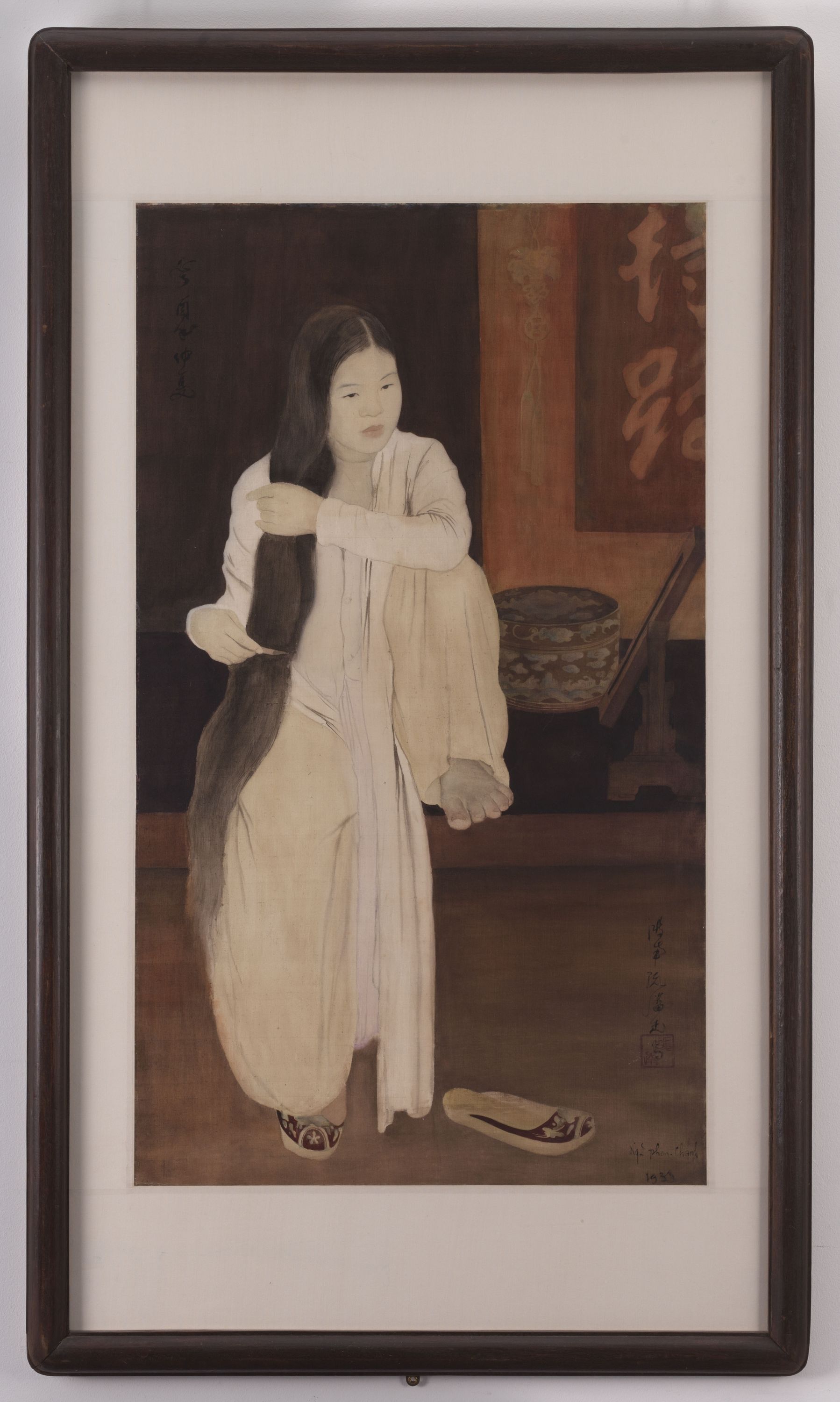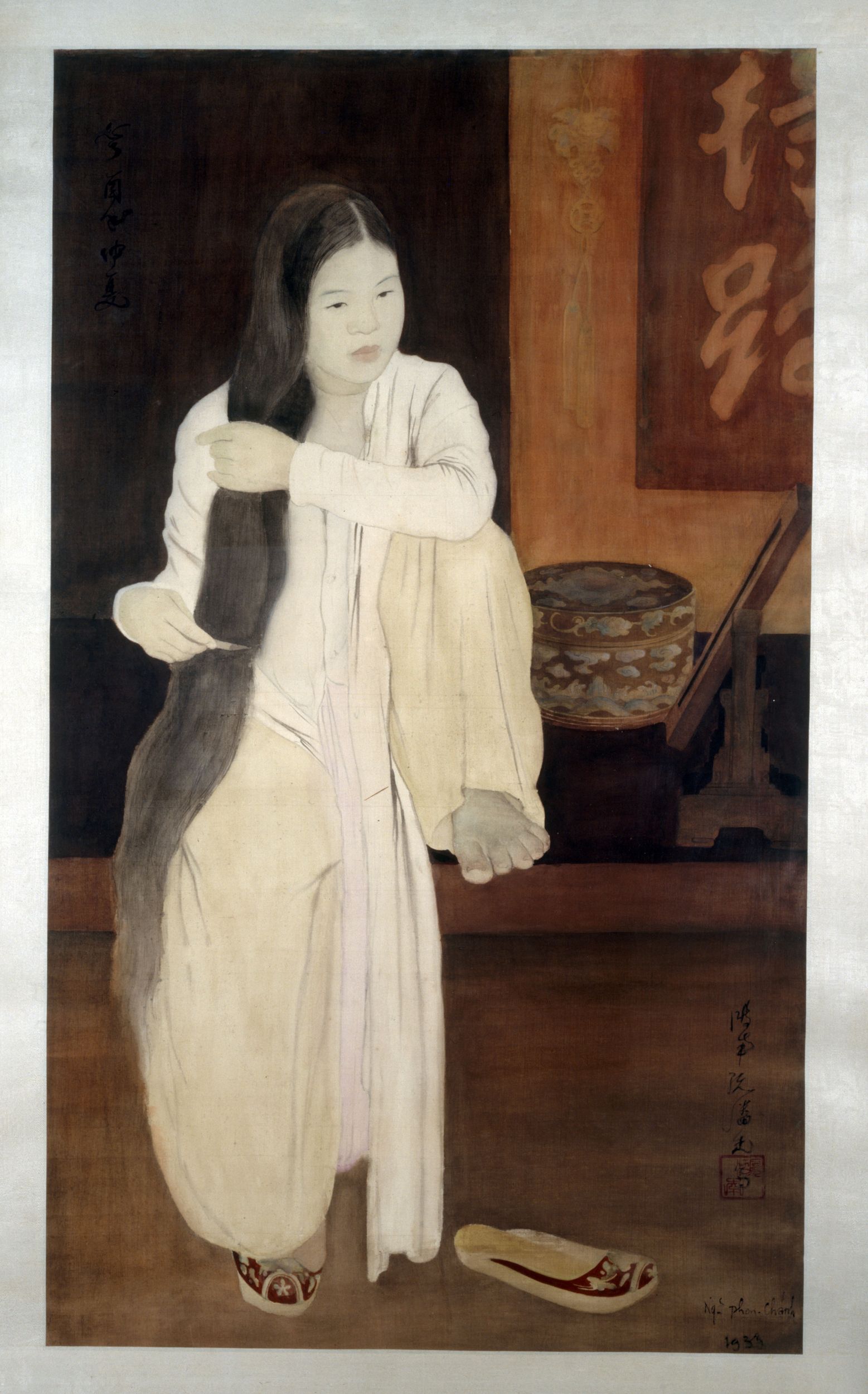
Jeune Femme en train de se peigner
Encre, Couleurs - Pigments, Soie
Peinture
癸酉之仲夏, été 1933阮潘正, Nguyễn Phan Chánh鴻南, Hồng Nam (son pseudonyme)
Don manuel : Dauriac, Jacques-Paul
M.C. 9904
Nguyễn Phan Chánh was a graduate of the first class to attend the École des Beaux-Arts de l’Indochine, which opened in 1925. The ambition of this school, founded by the French painter Victor Tardieu, was to foster the emergence of an "Indochinese" style that combined Western techniques and styles with local traditions.
Nguyễn Phan Chánh developed an understated style with a deliberately limited range of colours through which he sought to capture the essence of his people’s identity. This Young Woman Combing Her Hair achieves a subtle balance between elements of native, Chinese and French origin.
Chánh used the Eastern technique of ink on silk and composition in successive vertical planes. Yet in his careful rendering of the round box and the table mirror, as well as the extremely realist modelling of the left foot, the artist discreetly but unambiguously demonstrates his mastery of Western foreshortening and perspective.
The young woman is depicted in a simple interior, seated on a wooden bench bearing objects that reflect a certain idea of the Vietnamese identity. The Chinese influence is appears in the lucky silk knot and a calligraphic hanging scroll at the back of the room, on which two characters are partially visible. The Chinese characters in cursive script point to Chánh’s training in Mandarin and his wish to integrate classical Chinese culture in his identity as a Vietnamese artist. At the top left, the characters 癸酉之仲夏, Quý Dậu chi trọng hạ, mean "summer of the tenth year of the 60-year cycle of the traditional Chinese calendar", which corresponds to the summer of 1933. At the bottom right, the same date and the painter's name are written in the Western manner, but above them, in Chinese characters, is the pseudonym 鴻南, Hồng Nam, and the name of the artist, 阮潘正, Nguyễn Phan Chánh, followed by 寫 tả, “painted by”, and his seal in red ink.
Vietnamese virtuosity is represented in the round rosewood box inlaid with mother-of-pearl from the burgau. The burgau, a large seashell from the seas of the East, produces a shimmering mother-of-pearl with blue, green and pink reflections, which the artist renders subtly and unostentatiously. In the foreground, the silk-embroidered slippers of the young woman evoke another fine Vietnamese craft, embroidery, highly prized at the time and exported as far away as South China.
